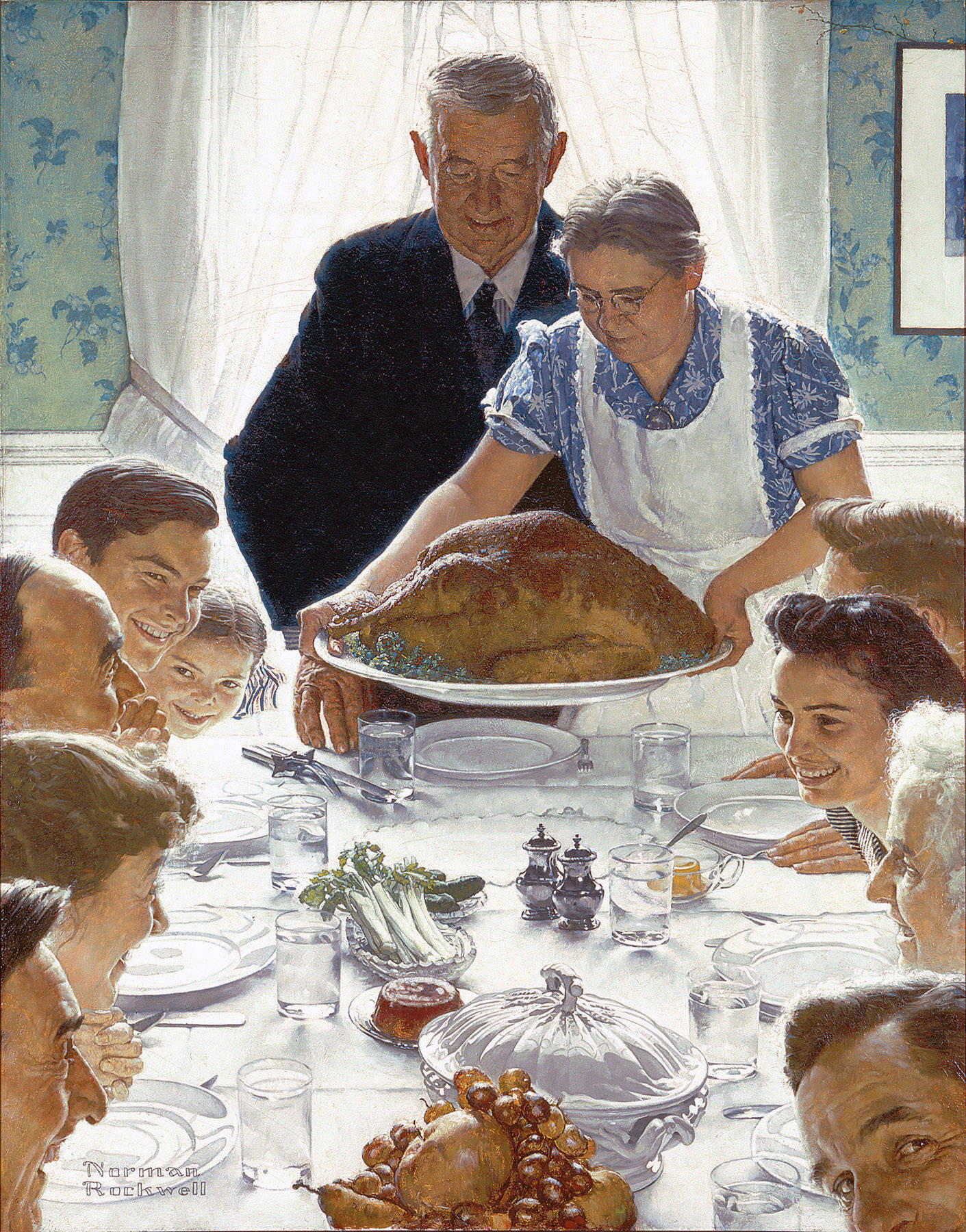AROUND THE TABLE (GRADES K-5)
Practice language associated with mealtime.
In January 1941 President Roosevelt, shared with congress his vision for a postwar world founded on four fundamental human freedoms: freedom of speech, freedom of worship, freedom from want, and freedom from fear. Inspired by his words, Rockwell created “Four Freedoms.” Originally published in the Post the paintings were a huge success and were later used to sell war bonds and stamps. The Four Freedoms paintings were sent on a national tour. They traveled to sixteen cities and were visited by more than a million people who purchased $133 million worth of war bonds and stamps. This painting represents freedom from want.
GOALS
- Teach new words
- Build language skills
- Build communication skills
- Participate in group conversation
MATERIALS
- Printed or digital copies of Freedom From Want.
- Drawing paper
- Markers and crayons

Freedom from Want, Norman Rockwell. 1943.
©1943 SEPS: Licensed by Curtis Publishing, Indianapolis, IN
[One line activity for teaser: What might you say if you were at this table?]
ACTIVITY
Observe
- Ask students to investigate the painting. Ask:
- What do you see on the table?
- What is happening in this picture?
- Who is at the table?
*For beginning language learns point to the objects and name each one.
Explore
- Together make a list of words and phrases that might be used at the table. You might include the names for the utensils, names for different foods, phrases like “thank you.” And “please pass the _____”.
- Ask students to imagine that they are at the table with the characters in the painting. Ask, What might you say? How would you ask for _______. What do you think the characters might be saying to each other?
- Now, set up your own table and pretend to share a meal together. Use the words and phrases you have been exploring.
EXTENSIONS
Try these activities to go even farther with your explorations.
Create
- Have students draw a picture that shows and activity they like to do together with their family. As a class, name the different objects and actions in each student’s creation.
Reflect
- In small groups, have students continue to explore the painting. Have them discuss ways that the family in this picture is different from or similar to their own family.

